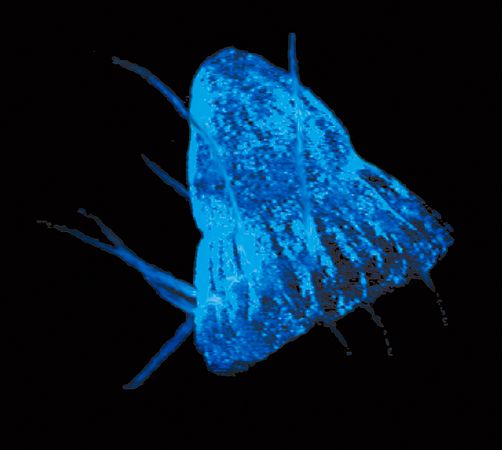Bioluminescence In Jellyfish
Biology 342 Fall 2010
Michelle Ichikawa
Ontogeny
The Development of Behavior
Deep sea organisms are notoriously difficult to study due to the inaccesibility of their native environment. Scientists were able to get a rare glimpse of the life cycle of the deep sea jellyfish P. periphylla when a colony took up residence in a Norwegian fjord. It was found that all stages of development were capable of bioluminescence if triggered by mechanical or electrical stimuli, including eggs, but that the quality of the light emitted changed as jellyfish developed. Light emission began as short flashes and grew longer in duration, leading up to cascades traveling over the bodies of the fully-grown jellyfish. This, they hypothesized, was probably correlated with the development of the nervous system. (Jarms et al 2002)

Photograph of P. periphylla displaying bioluminescence, Image courtesy of National Geographic
Jellies Have a Dietary Requirement for Colenterazine
Haddock et al showed that A. victoria lack the ability to produce colenterazine on their own through a series of experiments in which he raised the jellies in artificial conditions. Jellyfish raised in the absence of colenterazine were not able to luminesce, and jellies were shown to need to consume as much colenterazine as they use to continue light production. Thus, the development of bioluminescence is entirely dependent on the presence of colenterazine in their diet, though he discovered that jellyfish could use colenterazine present in the water to bioluminesce as well.